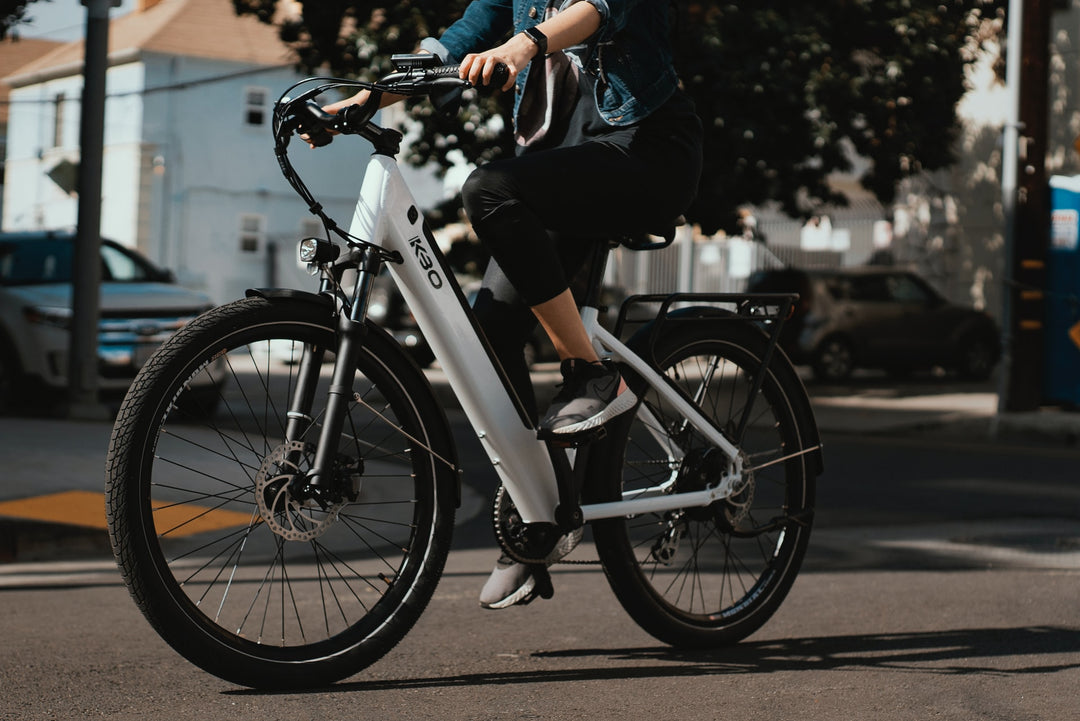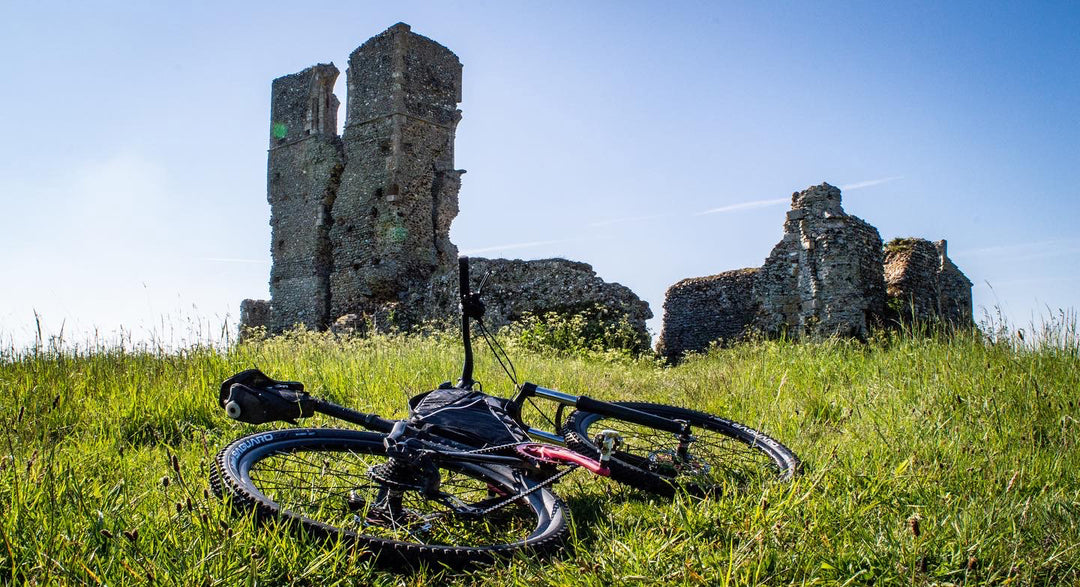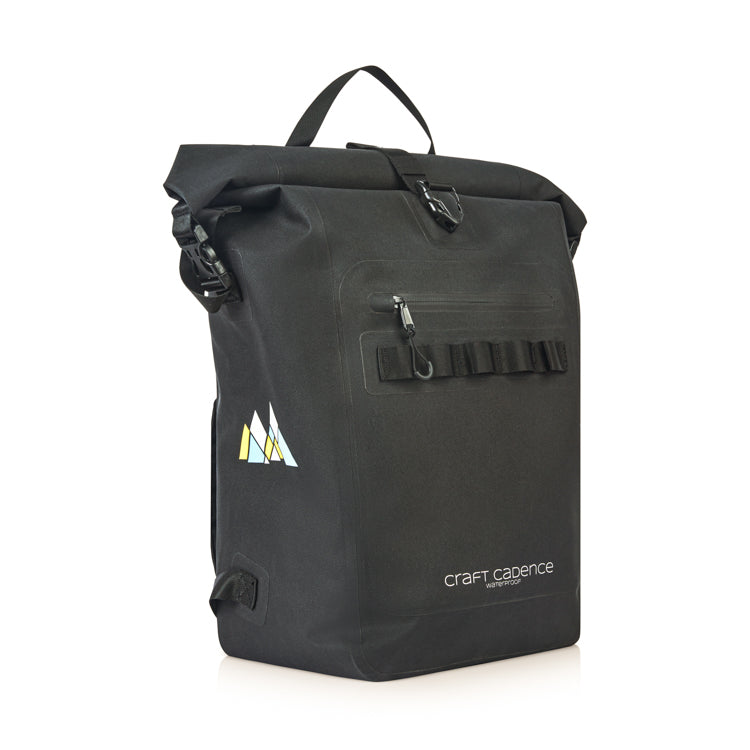Top 13 questions about the UK’s Cycle to Work Scheme in 2021, answered by experienced commuters
Craft Cadence is a UK based cycling bags and pollution masks brand that helps commuters stay organised and breath clean air. This is part of series of blog posts covering a cycle commuter's essential gear and equipment.
The UK’s Cycle to Work scheme is an initiative by the government to encourage more people to buy a bike to commute to work on. Not only are you able to save money through tax reductions, but you also get to spread the cost of the bike across the year. It almost sounds too good to be true, well lucky for you it is not. It is super easy and completely obliterates your excuse that you cannot cycle to work because you do not have a reliable or suitable bicycle.
By signing up to the Cycle to Work scheme, you can save up to 42% off the cost of a brand new bicycle (depending on your tax bracket).
Here are the answers to 13 of the top questions people have about the UK’s Cycle to Work Scheme. Read these carefully and you can maximise the gains that the program has to offer:
What is the UK’s Cycle to Work scheme and do I qualify?
The Cycle to Work scheme is a UK government tax exemption initiative. It allows employees to offset tax payments against a new bicycle’s cost by entering into a hire agreement with their employer or a scheme provider. HMRC does not need to approve or review any Cycle to Work scheme being set up. It is between the employer, employee and third party scheme provider.
All employers in the UK can sign up to a scheme. However, that does not mean that all employers have signed up. Take the initiative and tell your boss that you will be more productive, and the employer also makes a saving on NI payments with each agreement that is set up. The scheme is not available to anyone self-employed. If you are a company director and pay yourself through PAYE, you can still use the scheme no matter how small the company.
What happens at the end of the loan terms?
You are essentially hiring the bicycle from your employer or the scheme provider until the initial term has expired. You then have the opportunity to accept that maybe cycling to work is not for you and return the bicycle (you do not get any money back), extend the hire agreement (usually at no cost for 3 - 5 years) or purchase the bike and any equipment you have been hiring at a discounted rate.
When the initial hire period is coming to an end (usually 12 months), the service provider will let you know if you need to do anything.
How much can I save by using the Cycle to Work scheme?
| Annual Salary | £25,000 | £60,000 |
| Loan amount | £1,000 | £1,000 |
| Tax + National Insruance | 32% | 42% |
| Savings (based on 12 month agreement) | £320 | £420 |
It is incredible how good the deal is, if you were previously thinking about paying £1,000, you could spread the cost over the year and end up only paying £680 (base on being a Basic Rate Taxpayer). Generally, the salary deduction is only for 12 months. However, do be prepared to not officially own the bicycle outright until up to 6 years after you have exchanged your voucher for a bike.
It is also worth noting that salary deduction such as the Cycle to work scheme can affect other benefits, such as pension contributions and statutory sick pay. Also, you cannot take on payments that bring you net salary below the national minimum wage.
Are there any conditions to me signing up to the Cycle to Work scheme?
These are the only conditions officially stated by the Government:
- An employee must not at any point during the hire period, own the bicycle
- At least 50% of the bicycle use must be commuting to work
- For employers - The Cycle to Work scheme should be available to the whole workforce
However, you are entering into a contract with your employer or a third-party provider, so make sure you read the small print to make sure the terms are not too onerous.
How do I know if my employer is signed up to the Cycle to Work scheme?
Most companies will proudly declare their participation in a Cycle to Work scheme in their employee handbook or any job adverts as an “Employee Perk.” If you cannot find it written anywhere, simply ask your boss or the HR department.
If your employer is not signed up yet remind them of the benefits of cycling to work (and if it is the finance team, it will not hurt to say there is money to be saved by the company).
Do I own the bicycle I get through the Cycle to Work scheme straight away?
You do not legally own the bike until the hire agreement has expired, this can be up to 6 years (don’t worry you will only actually be paying for the initial hire period, usually 12 months). Although you are technically leasing the bike from your employer or the scheme provider, it is still your responsibility to keep the bike safe while it is in your custody.
So it is a good idea to take out insurance or check whether the bike’s value is covered under your existing home insurance (also check what conditions apply while the bicycle is left unattended). Make sure that you purchase a good quality lock or two when you get the new bike. Especially if you live in a city.
How do I sign up to the Cycle to Work Scheme?
Most employers and Cycle to Work scheme providers make it easy to sign up.
- Your employer registers with a scheme provider
- Choose the bike you want
- Your employer agrees to the “loan” amount and issues you with a certificate to redeem at an approved retailers store
- You pay your employer back through monthly instalments taken directly out of your pay
Before you start looking for your new ride, remember to check which scheme your employer is signed up to. This will influence where you can get your new bike from, so it is worth finding out before you waste too much time looking at a bike that you will not be able to get.
Once you have decided on the bicycle you would like, you need to go to your employer to get the certificate you will need to present to the bicycle retailer. You can choose the certificate or lease amount, so obviously, only select the amount you need to get everything to cycle to work safely.
Can I get a bicycle that is worth more than £1,000 through the Cycle to Work scheme?
Although when the scheme first started, it was capped at £1,000. There are plenty of scheme providers that offer more than £1,000 agreements. One reason for the limit being scrapped is to encourage more people to get an e-bike, most of which are over £1,000. However, it is down to the employer to set the limit when they sign up to the scheme, with the minimum being £1,000.
In addition to the bike, you can also purchase safety accessories (helmets, bike lights, locks etc.), essential accessories (Clothing, shoes, mudguards etc.) and any components your bike needs. Regrettably, action cameras and GPS bike computers are not deemed to be safety or essential equipment. Do a bit of research on what you need to buy to cycle to work.
Are all bike shops signed up to the Cycle to Work scheme?
Several scheme providers are not retailers. That gives you the flexibility to choose independent and local bike shops that have signed up accept purchases made through that scheme. These include Bike2Workscheme, CycleScheme and CycleSolutions.
A number of the large national retailers such as Evans Cycles and Halfords have their own schemes.
Your employer may have already signed up to a Cycle to Work scheme. However, if not try to convince them to go with one of the schemes that do not tie you down to one retailer.
What do I do if I want to use the Cycle to Work scheme, but my employer is not signed up?
Turn up your charm and try to convince the HR department or your boss to sign up. The Cycle to Work scheme is a salary sacrifice initiative (based on the tax you ordinarily pay), so unless you can get your employers to sign up, you will not be able to use this initiative.
What happens I leave my job while still paying off the bike?
If you leave your job during the initial hire period, your employer or scheme provider is entitled to take the settlement amount from your final salary without any tax deductions. They could, in theory, ask for the bicycle back to be used as a company bike.
Some scheme providers do, however, allow you to transfer the hire agreement to a new employer. If you are facing redundancy or looking to move to a new company, check what impact it would have on any outstanding balance with your current HR department.
How often can I get a new bicycle on the Cycle to Work Scheme?
The Cycle to Work scheme is not a one time deal. You can make use of the scheme year after year. You can even have two certificates running concurrently as long as the sum of the deductions does not exceed the limits set by your employer or scheme provider.
This also means that you can get your bike first, then after figuring out all the equipment you need, you can get a second certificate to purchase all the safety and essential gear you need to commute by bicycle.
Can I only get a hybrid or city bike on the Cycle to Work scheme?
No, you can get whatever bicycle takes your fancy. There is no reason you cannot use a road bike to cycle to work. Just remember that to comply with the scheme’s terms, more than 50% of the bicycles use must be to cycle to work.
E-bikes are an excellent way for you to get the best of both worlds. You can commute to work by bicycle, but do not have to worry about getting too tired or turning up all sweaty. Fortunately, whatever type of bike you like the look of you will be able to get through the cycle to work scheme.
Is the UK’s Cycle to Work Scheme worth signing up to?
It is a great initiative. There is no official data to suggest it has actually increased the number of cycling commuters on the countries roads. Although the official rules are that bicycles purchased through the scheme must be used for at least 50% of the time to commute to work, no one is policing it (nor would you expect it to be).
You may not own the bicycle outright for a few years (potentially 6 years), but does that really matter. You are still able to use it and are responsible for it. It is not the same as renting a flat where you need to check with the landlord to change the colour or change the components. The savings you make depends on your tax bracket, but you stand to save 32% on a bicycle and its accessories as a minimum.
Moreover, you can get a new bike every year. If you do not fancy replacing your bike every year, you can also replace and upgrade your safety equipment, components and parts that are necessary to be able to commute by bicycle.
This scheme is perfect for someone that does not currently own a bicycle and is looking for new ways of staying fit and active this year.
Have you used the Cycle to Work scheme? Is there anything that would stop you from using it again in the future? Why do you decide to cycle to work?



